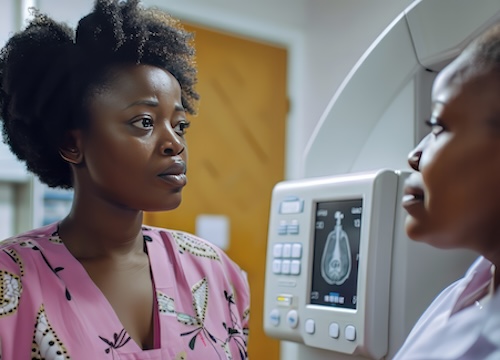
Women of minority race and low socioeconomic status have lower access to digital breast tomosynthesis (DBT) screening, which may contribute to persisting disparities in breast cancer screening, according to a study.
DBT, or three-dimensional mammography, was approved by the FDA in 2011. Compared to traditional digital mammography (DM), or 2-dimensional mammography, DBT has been associated with improved outcomes, including increased cancer detection rate and decreased recall rate from screening. More than two thirds of mammography screening facilities in the United States have DBT. However, questions remain as to whether DBT has been adopted equally in all populations.
“Populations with traditional disparities—Black race, Hispanic ethnicity, lower educational level, or lower income level—have historically experienced greater breast cancer morbidity and mortality than their less disadvantaged counterparts. These populations have also historically been the last to benefit from newer medical technologies,” the study authors noted.
They evaluated 92 imaging facilities in five U.S. states that performed a total of 2,313,118 screening examinations in women aged 40 to 89 years between 2011 and 2017. The main outcomes were on-site access to DBT at time of screening based on examination year, and use of DBT versus DM screening based on years since DBT was adopted at the facility.
The proportion of women had DBT access at the time of their screening appointment significantly increased from 2011 to 2017 (3.3% [n=11,558/354,107] vs. 82.6% [n=194,842/235,972]). In 2012, women of minority race were much less likely to have DBT access than White women, including Black (relative risk [RR], 0.05; 95% confidence interval [CI], 0.03-0.11), Asian American (RR, 0.28; 95% CI, 0.11-0.75), and Hispanic (RR, 0.38; 95% CI, 0.18-0.80) women. Compared to those with a college education, women with less than a high school education also had much lower DBT access in 2012 (RR, 0.18; 95% CI, 0.10-0.32).
Disparities still persisted when looking at women attending the same facility. When Black and White women attended the same facilities, which had access to DM and DBT at the time of screening, Black women were less likely than White women to use DBT, with RRs ranging from 0.83 (95% CI, 0.82-0.85) to 0.98 (95% CI, 0.97-0.99). Similarly, DBT use was lower for women with lower levels of education, compared to those who graduated college: for non-high school graduates, RRs ranged from 0.79 (95% CI, 0.74-0.84), and for high school graduates, from 0.90 (95% CI, 0.89-0.92) to 0.96 (95% CI, 0.93-0.99). When comparing women with the lowest income quartile versus those in the highest income quartile attending the same facility, the RRs ranged from 0.89 (95% CI, 0.87-0.91) to 0.99 (95% CI, 0.98-1.00).
The study was published in JAMA Network Open.







 © 2025 Mashup Media, LLC, a Formedics Property. All Rights Reserved.
© 2025 Mashup Media, LLC, a Formedics Property. All Rights Reserved.